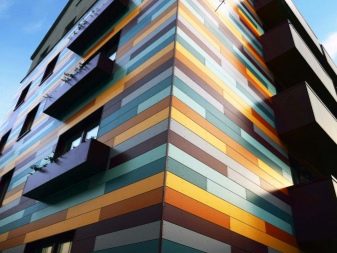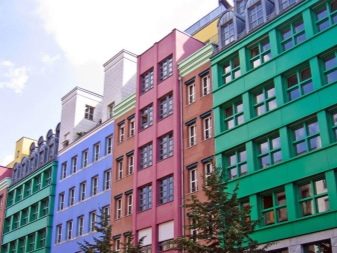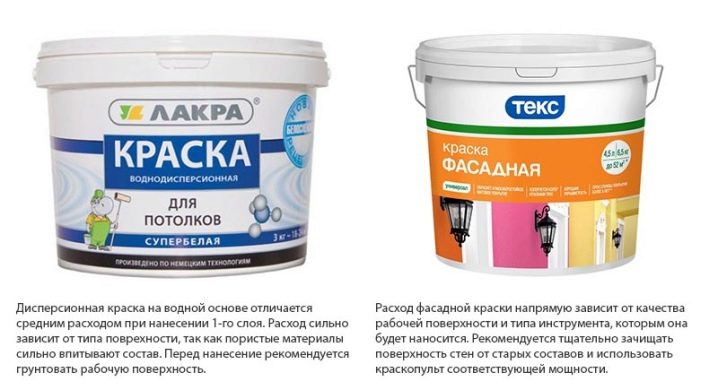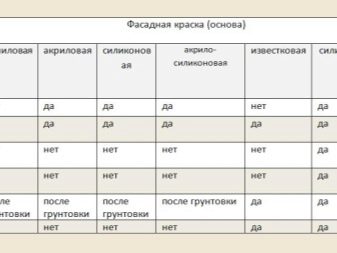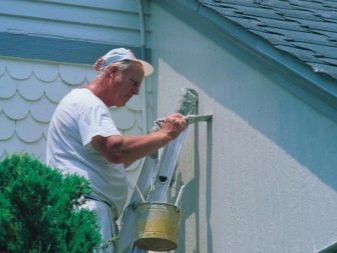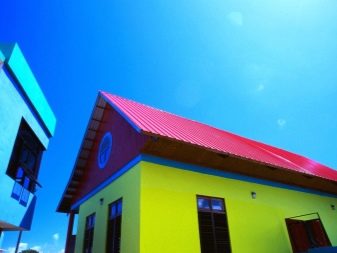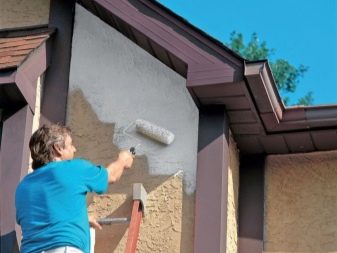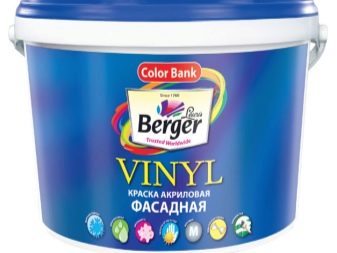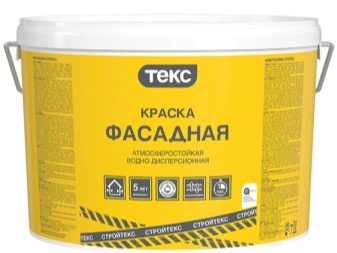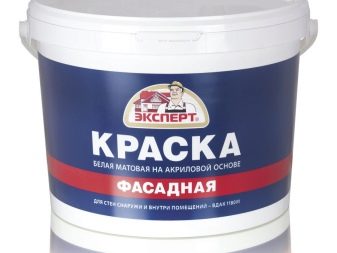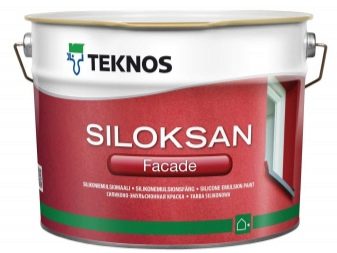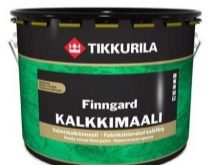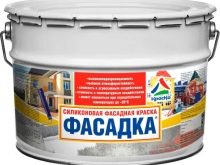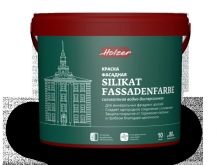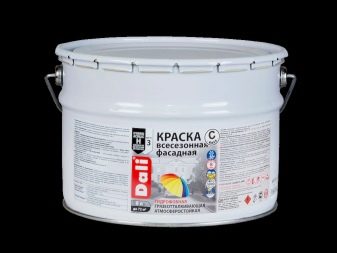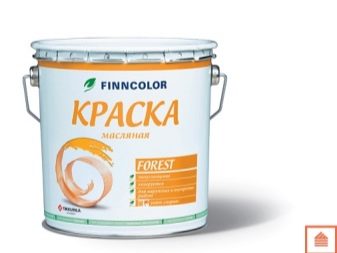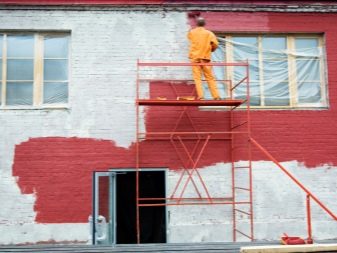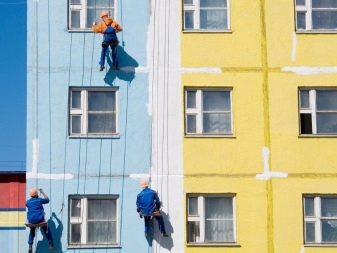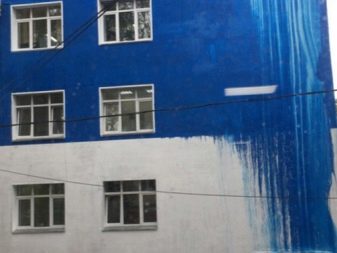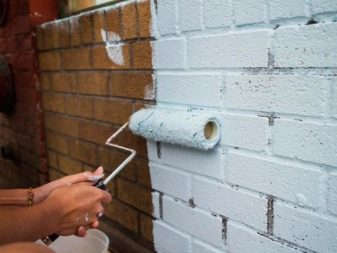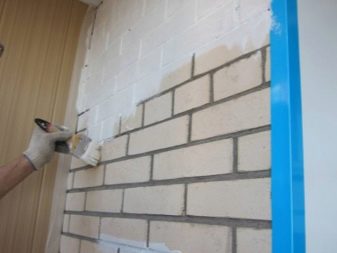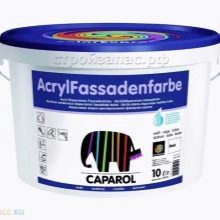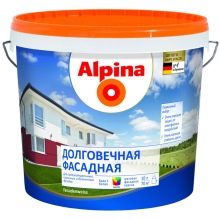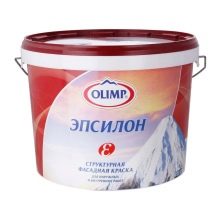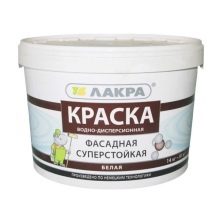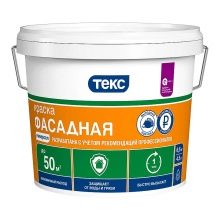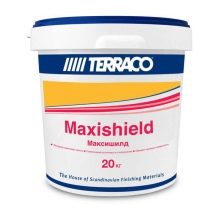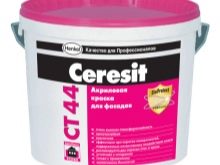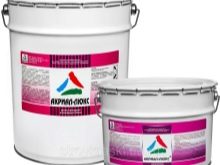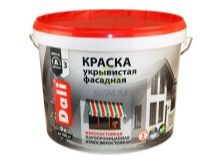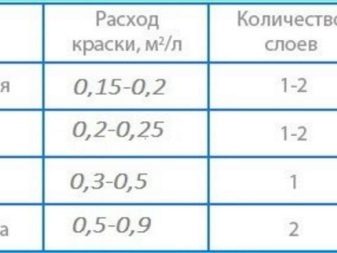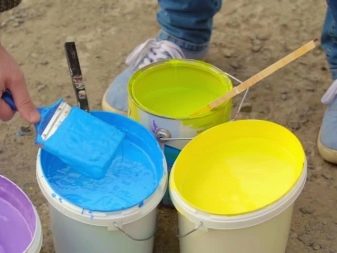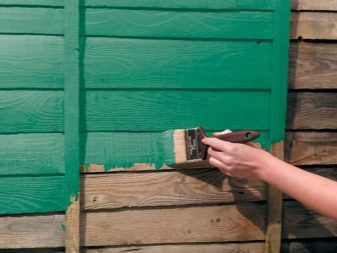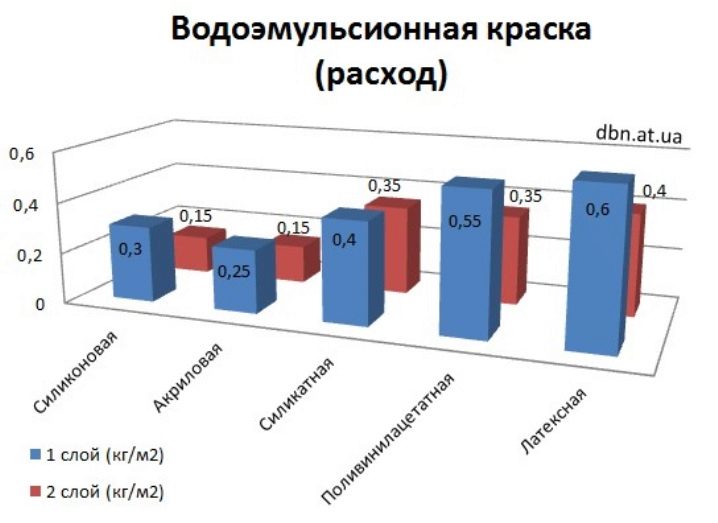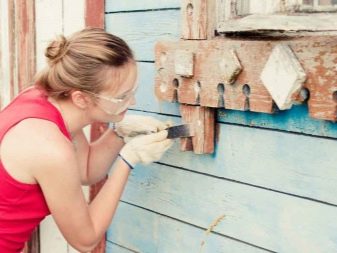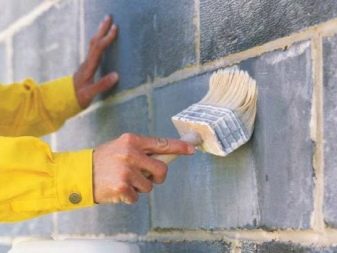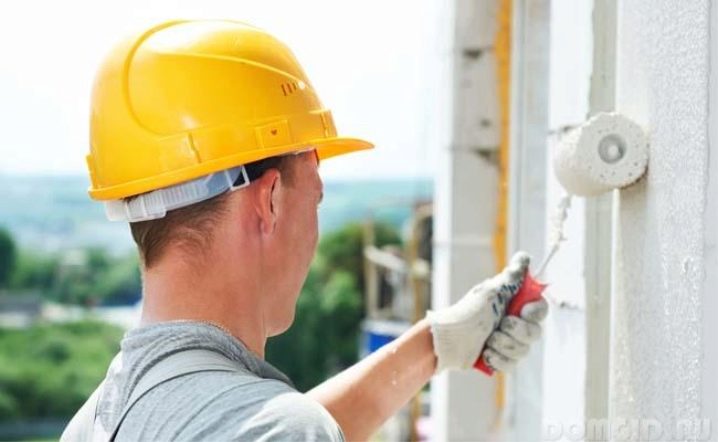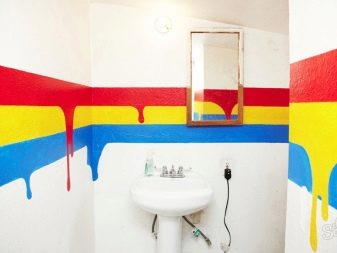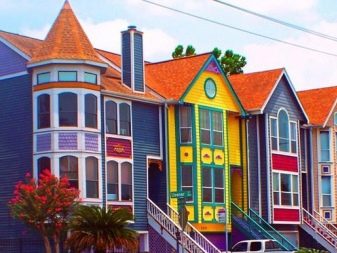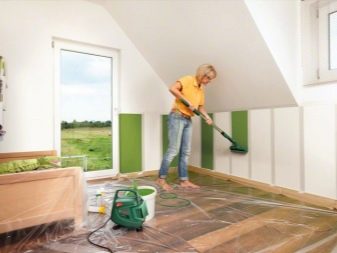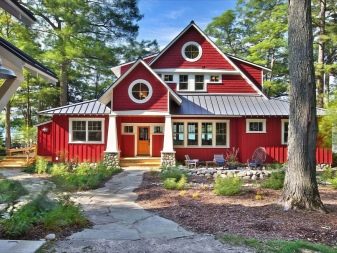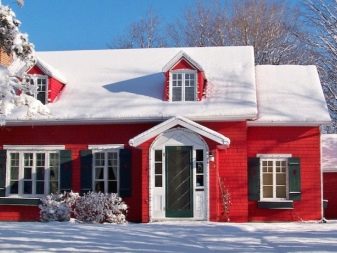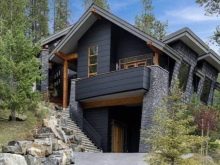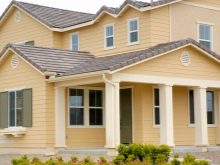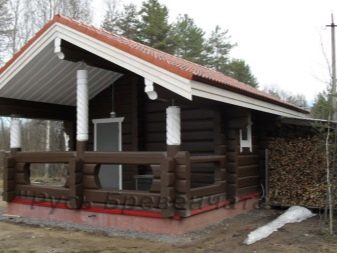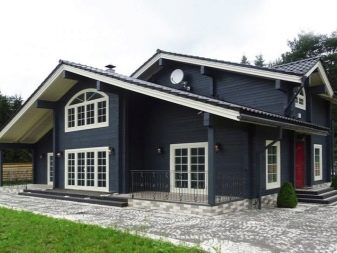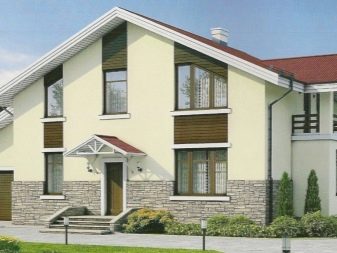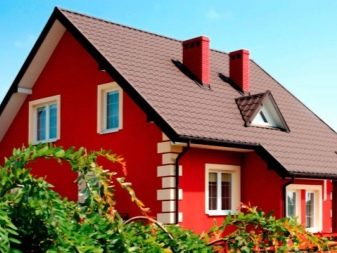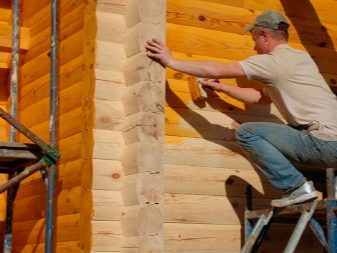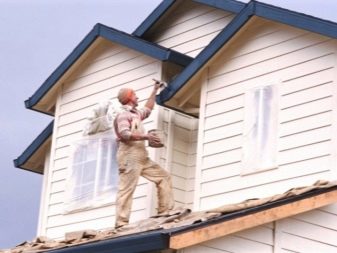Types and subtleties of the choice of facade paint
Facade paints are designed not only to decorate the building, but also to protect the facade from the effects of external factors. The walls are subject to constant negative exposure to sunlight, precipitation, sudden changes in temperature, as well as the appearance of fungus and mold. That is why for painting the facade, experts recommend choosing exceptionally high-quality products with optimal characteristics.
Special features
When choosing a paint be sure to pay attention to the content of binders in the composition. Front paints contain synthetic resins, but also lime, cement, liquid glass can be included in the composition. From the binder depends on the quality of the material.
Cheap paints have a small amount of binder.Often it is replaced with fillers that increase the volume of paint, but the quality of this becomes worse.
Please note that not any exterior paint is suitable for exterior decoration of a particular building. Features paint selection depends on the nature of the base. Plaster, silicate, lime, brick, concrete - all of these materials require different paints and varnishes.
Properties
Facade paint differs from others in its properties, which explains the popularity of this tool.
Among the characteristic features are the following:
- Water resistant. A layer of paint is used to protect the walls from moisture, which is why the tool must have a low absorption capacity. Otherwise, the facade will get wet and dirty. Also on the walls due to the high level of humidity salts are deposited, cracks appear. The lower the permeability, the better the paint;
- Wear resistance. Good stability can be claimed when the paint withstands at least 5,000 cleaning cycles until it is completely erased;
- Paint consumption. As a rule, this parameter ranges from 100 to 300 g per 1 sq. Km. m, if the staining is done in one layer.For different quality surfaces consumption will also be different.
Facade paints are not used for interior decoration. They are not recommended for buildings with high levels of humidity, such as baths and saunas. For facing of such buildings it is better to use ventilated facades. In order for the paint to better adhere to the facade, the surface must be thoroughly cleaned and then covered with a fungicidal compound.
Kinds
There are a huge number of types of coloring materials for facades. They differ in quality. Before painting the facade, it is necessary to carefully examine the species in order to choose the most suitable material. The following types are most popular:
- Vinyl. When used in finishing works, such water-based paints are diluted with water. The undeniable advantage of this material is the affordable price, but the quality is far from the best. Often under the influence of chemicals, from mechanical influences the paint deteriorates. In addition, mold can form on the painted surface;
- Perchlorvinyl. Well protects the surface from moisture.This tool has the following technical characteristics: viscosity - 30-45 s, the material dries no more than a day, paint consumption - 270 g / sq. m;
- Acrylic (latex). They meet all the requirements of reliability. This material differs in low water resistance, so the surface will remain whole for a long time, it will not become dirty. The advantages of rubber paints also include tightness and elasticity of the applied layers. The brightness of the painted surface for many years remains unchanged, this lining does not fade under the influence of sunlight;
- Silicone. They are divided into three types: silicone, silane, siloxane. Moisture that gets on the surface, painted with silicone paints, does not penetrate inside, but simply flows down the walls. Moreover, these materials increase the strength and durability of the facade. Silicone solutions can also boast excellent adhesion;
- Limy. Such paints should be diluted with water before use. There are no organic resins in their composition, but there are substances that disinfect the surface. Due to this, the facades do not form mold or fungus.More often others are white lime paint;
- Silicate. Differ in simple structure, durability and wear resistance. On such a surface does not form a fungus and mold. If you start repairing, please note that it will be difficult to remove such paint;
- Silicate ash. Silicone resins are added to the composition. Such solutions are easily applied to the surface, they are resistant to high humidity, have good vapor permeability. Experts recommend using this decorative paint on the facades of buildings covered with dry cement or lime-cement plaster;
- Cement. These materials must be diluted with water before painting. The composition has a connecting element - white Portland cement with polymeric additives. It has good vapor permeability;
- Oily. Suitable for painting wood. A characteristic feature is the presence of natural and artificial varnish and dye in the composition. In some cases, these paints are used for interior work. They protect the tree from rotting and moisture;
- Dispersion. They are made on the basis of a water dispersion.They are not resistant to atmospheric factors and mechanical damage. Such paints and varnishes are not popular at all, since they do not prevent the appearance of fungus and mold.
Decorating the facade with any paint is a great solution. So you will make the surface brighter and more “alive”.
You can combine different colors. Often use textured paint, with which you can create an original pattern.
Criterias of choice
Before you buy paintwork material, you must carefully examine all its characteristics in order to choose the best. Most buyers pay attention only to the decorative properties and completely forget about other parameters. The durability and quality of paint depends on the following characteristics:
- Lightfastness. This factor is important, because under the influence of sunlight many paints lose their attractive appearance. You should not choose too bright colors, as muted tones are more resistant to fading. Especially resistant dyes have a special labeling on the packaging that allows you to quickly select the appropriate material;
- Vapor permeability This property of the coating means its ability to pass water evaporation. The minimum of moisture allows the coating to hold better, retaining its rich color for many years. Some manufacturers produce paints that allow evaporation only from the inside to the outside;
- Resistant to exfoliation and bloating. These characteristics are associated with the adhesion of the coating to the facade. In this case, a lot of attention should be paid to cleaning the surface, as well as adherence to painting technology;
- Resistance to adverse environmental effects;
- Abrasion resistance. The number of cleaning and cleaning cycles that paint can withstand depends on this factor. Also taken into account the type of cleaning: dry or wet. The higher the value, the better the product, the longer it will last. This property is determined by laboratory tests.
Compliance with the above criteria, as well as the high quality of the material must confirm the certificates. When choosing a finishing coating, it is necessary to take into account technical characteristics, for example: consumption, drying speed, thixotropy, hiding power.These properties are listed on the bank, so that they are always available for review.
Also do not forget that not all paints are universal. So, for some surfaces only specific paints and varnishes are suitable. For example, for the decoration of the facade of the stone is to use cement-lime coating.
Manufacturers
Everyone knows that paints of different trademarks of the same composition have their own quality features, so you should familiarize yourself with the front paint lines from well-known manufacturers:
- Caparol. A feature of this material is thermoplasticity and low water absorption. Thanks to these properties, there will be no pollution on the facade;
- Alpina. Means with high adhesion, excellent hiding power and wear resistance. It is easy to apply on the facade. To give this paint the necessary shade, it is necessary to apply the colors produced by the same company;
- "Olympus". This company offers products based on acrylic with quartz filler. Paints from this brand can be used for painting both internal and external walls.They are appropriate to use in premises with high maneuverability, as well as with a high mechanical load;
- Lacra. One of the best facade paints, which includes a synthetic polymer that does not react to water. Thanks to this tool is uniformly applied to the surface. The paint contains water. The composition can be used inside and outside areas with high mechanical loads;
- "Tex". Differs in high quality. The paint adheres perfectly to the surface, passes air, and is resistant to high humidity. On the painted facade will not form mold and fungus. Over time, the paint does not fade, and even after many years the color will remain saturated. Moreover, the material is resistant to severe frosts;
- Terraco. Matte acrylic paint, which is very popular. It hides all the defects of the surface, elastic, and the wall covered with it, easy to clean. This product is resistant to alkaline media. Its undeniable advantage is the excellent ratio of high quality and affordable prices;
- Ceresit. Water based paints that are odorless.They allow the walls to "breathe", and also protect them from mold and mildew. This material is a universal: it can be used for almost all surfaces. It is also worth noting its resistance to low temperatures;
- "Acrial". Paintwork received a huge amount of positive feedback. This is an acrylic enamel designed for use in difficult climatic conditions, for example: at low temperatures, high humidity. Distinctive characteristics of the material is that it is possible to paint the surface during frost, as well as vapor permeability, resistance to sunlight;
- "Dali". It is used for painting buildings that require frequent renovation of a layer of facade paint due to heavy pollution. This tool can be used at temperatures from -40 to +40 degrees. Odorless, resistant to ultraviolet rays, durable.
Decide on the characteristics that are important to you, and choose the best facility for the facade.
If you are at a loss with a choice, then contact the specialists, because the facade is the “calling card” of any building, so it must be well maintained.
Consumption
If you plan to paint a large area, it is best to buy the material with a margin, given the expense of 1 square. The products of one manufacturer will definitely be the same shades. If you do not have enough money, do not buy more paint from another company - you can not guess with the color. As a result, the facade will look ridiculous.
To calculate the required amount of material, you must multiply the height of the wall by its width, and then subtract the area of the plots that will not be painted. As you know, all values should be rounded, and in this case it is necessary to do it in a big way.
Consider that a rough surface will need more paint. Material consumption for such walls is 15-20% more.
Also, the flow is affected by such nuances as the type of surface to be treated and the hiding power of the composition. Details of the last property manufacturer points to the bank.
Paint consumption is:
- for painting smooth non-absorbent surfaces - from 6 to 8 square meters. m per kg;
- for staining absorbent surfaces with defects - from 5 to 7 square meters. m per kg
Today water-based paint is in demand.When painted in two layers, its consumption is about 300 g per 1 sq. Km. m. One coat will dry for about an hour. In addition, these paints are odorless, and you can easily clean the surface from them.
The consumption of oil paints directly depends on the color: the lighter the product, the more material is needed.
On average, consumption reaches 200 g per 1 sq. Km. m. Alkyd paints, if necessary, must be diluted with turpentine or white spirit. It is possible to paint with this material any surface, even metal. Consumption of this composition depends on the color and texture of the surface, as well as the method of staining. On average, the consumption rate - 150 g per 1 square. m. A wide range of paints with different characteristics allows you to choose the best tool for painting houses and public buildings.
Application details
Surface painting is a rather complicated process that requires maximum caution. If there is an old paint on the walls, and it is in good condition, then it should not be washed off - you can put a new layer on it. But, if the old material is already cracked and began to crumble, it will be necessary to perform a thorough cleaning of the walls.Before you start applying paint, check whether the walls are ready for painting. To do this, use a wooden bar.
Swipe them around the surface: if there are traces of chips, then you can begin to paint. If you find any defects, then they should definitely be filled.
When all defects are eliminated, the surface should be checked for its ability to absorb moisture. To do this, use a damp sponge on the wall. If the trace disappeared instantly, then the wall must be primed. When you start applying paint, pre-divide the entire wall into several sections. They can be separated by pipes, bends, protrusions and the like. It is convenient to apply paintwork materials with the help of the roller with the movements up and down. In hard-to-reach places it is more convenient to use a brush.
When one area is already painted, do not wait until the entire surface is dry. Start painting another. There will be no difference in overlaying the layers. Note that the direction of paint application depends on how many layers of coating you plan to apply. For example, if there are only two layers, then the first is better to be applied horizontally, and the second - vertically.
If three layers are planned, then at first and at the end they are painted vertically, and the second layer is applied horizontally.
Is it possible to paint indoors?
The modern construction market offers a huge selection of facade paints. Some of them can be used for indoor work.
When interior decoration should pay attention to the composition of the material:
- Binders Acrylic and silicone paints can be used to paint the interior walls. A synthetic resin is used for their manufacture, due to which the material has high quality and excellent characteristics;
- Water resistant. Please note that the higher the indicator, the better. Especially this factor must be taken into account if it is planned to paint the walls in the bathroom, kitchen or sauna;
- Wear resistance. Acrylic paints can boast with this property. After painting the surface, this material creates a high density layer. As a result, the walls become resistant to various mechanical influences. The facade of the building over the years will remain bright and attractive.
The stores offer paints that dry as quickly as possible.Given all the above characteristics, it can be concluded that acrylic and silicone paints are suitable for painting walls indoors.
Facade Coloring Examples
Often, even those who like to experiment are not ready to drastically change the facade of a house. Most prefer calm pastel tones. The modern palette of colors available is surprising, allowing everyone to make all their dreams come true. The combination of beige and black shades looks luxurious. These two noble colors will create an aristocratic design.
To create a beautiful facade of the house, when choosing a shade, consider the recommendations of experts:
- The color of the facade should be in harmony with the landscape at different times of the year. The same tone will look different in winter and summer. For example, a house painted in green shades will look ridiculous when snow falls on the street;
- Changing the facade of the house, do not forget to paint the roof. It should be a few shades darker, while harmonizing with the exterior;
- Follow the same style on your site, consider even the smallest nuances;
- Looks impressivewhen the walls emphasize the natural texture of a wild stone or decorative plaster. The beige finish perfectly harmonizes with the white railings and window frames. Dark colors blend beautifully with wild stone foundations, wooden doors or terraces;
- If the house is large, then pastel colors can be “diluted” with bright details, for example: slopes, window frames, shutters and the like;
- The ideal number of colors used in the exterior - three. Too colorful landscape will look ridiculous.
In addition to their own interests, it is necessary to take into account fashion trends. Today, natural dark tones are in demand: brown, dark brown, black. Many try to avoid black shades, but in vain. This color makes the appearance more noble and respectable. Black color is great for painting wooden houses with large windows or verandas.
To create your dream home you need to choose the right color in accordance with the architectural features of the building. Beautifully look shades of the same color, different saturation. It is appropriate to use natural tones.
If you want to visually enlarge the building, then light shades are an excellent choice, and those who want to emphasize simple and concise forms should choose rich colors. When choosing a color palette, use the following principle: the basement is the darkest element of the house, the roof is painted with a slightly lighter shade, the facade is medium in saturation. Do not forget to observe the combination of different tones of the same color.
Wooden houses are worthy of special attention. Their feature is environmental friendliness, so natural colors will look best. You can often find green, red and brown wooden houses.
In order to emphasize the wood texture, experts recommend the use of transparent enamels that perform protective functions, while preserving the structural features.
Types of paints more than enough. Please note that there is no perfect paintwork material. It is necessary to choose products taking into account operating conditions, and also a type of a facade. If you want to not just paint the surface, but to create any ornament, choose a textured paint. This is the best alternative to decorative plaster.With the right choice of paint products, you can create a quality, durable and durable coating of the facade.
The nuances of the choice of facade paint, see below.

